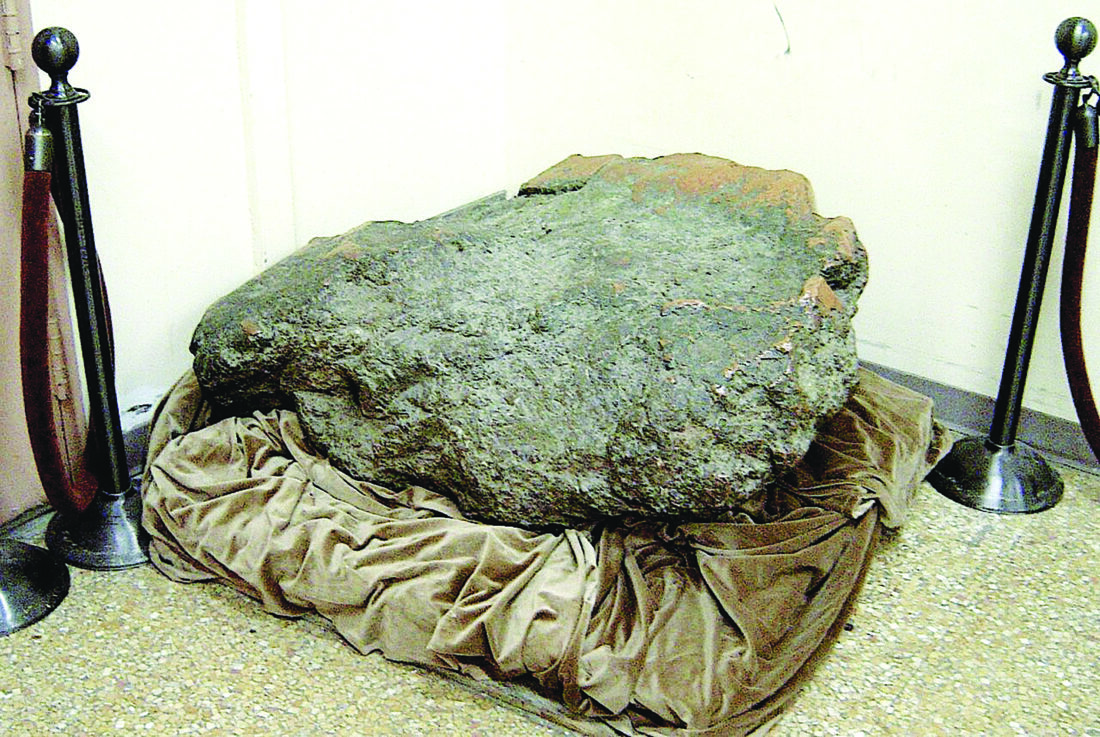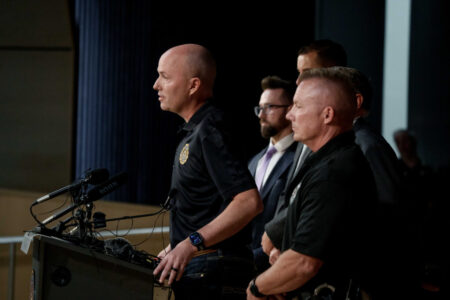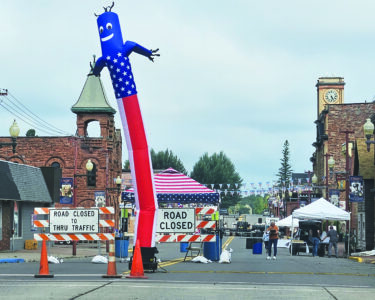Bring it on home
Effort to return Ontonagon Bolder

:Ian Shackleford, 2011. Public domain
CALUMET – An ongoing effort of the Ontonagon County Historical Society (OCHS) to have the famed Ontonagon Boulder returned to the Copper Country was a topic of discussion at the Keweenaw National Historical Park Advisory Commission quarterly meeting Tuesday.
Bruce Johanson, with the OCHS, formally requested the Advisory Commission contact the Smithsonian Institute, to have the Keweenaw National Park Service have the 3.307-pound mass of pure copper displayed at the Park Service office on loan. The boulder is part of the Smithsonian’s collection, in the Department of Mineral Sciences at the National Museum of Natural History.
Johanson said the boulder has not been on public display in the institute since 1996. “Now, specifically,” Johanson said, “what we propose to the Advisory Commission is a formal request for your consideration to place the Ontonagon Boulder on loan to the Keweenaw National Historical Park.”
After a brief discussion, the committee approved a motion to write a letter of support to explore the possibility of having the Ontonagon Boulder displayed at the KNHP.
Johanson said several requests have been made of the Smithsonian 0ver the years to temporarily return the boulder to the Copper Country for various celebrations.
“In June, 1955, there was a local celebration commemorating the Copper Range Company revitalizing the copper industry in this area,” Johanson said. “As part of the festivities, it was thought that having the Ontonagon Boulder returned the area during the Morris LaCroix Days would be appropriate, because it was the boulder that started it all.”
The Smithsonian, he said, denied the request, but manufactured an exact replica of the boulder and sent it to Ontonagon for the festival, Morris LaCroix Days.
“For several years after the Morris LaCroix Days, this replica boulder was kept on display outdoors in front of the Ontonagon County Museum,” Johanson said. “Eventually, it was moved to the current museum location.”
In 1987, the Ontonagon Boulder was exhibited at Michigan Tech’s A.E. Seaman Mineralogical Museum, as part of Michigan’s sesquicentennial celebration.
Johanson said that the boulder was part of the Labor Day parade in Ontonagon that year.
“It was (transported) on the bed of a 10-ton truck,” said Johanson, “chained down, with an armed guard beside the driver to make sure no one would try to steal it.”
The city of Detroit requested the boulder on loan that year. The request was denied. Four years later, the Keweenaw Bay Indian Community formally requested the copper boulder be returned to its possession. According Smithsonian documents, a request was received from the KBIC in 1991 for the return of the Ontonagon boulder as a sacred object. The Smithsonian report states states that according to the tribe, the boulder was used by individuals to make offerings to its manitou (spirit) and to seek improvement in their health and well-being.
An assessment was initiated and a preliminary analysis of available information indicated that the tribe presented insufficient evidence to establish that the boulder fits the definition of sacred object under the repatriation law, according to the report.
Yet, in 1971, the Smithsonian Institution Press published an essay, The Story of the Ontonagon Copper Boulder. The first sentence reads:
“Indians worshiped this copper boulder; many white men wanted it; and in 1843 the War Department seized the 3,000-pound mass from the man who had finally succeeded in moving it from its site along the Ontonagon River.”
The boulder was removed from the south fork of the Ontonagon River in 1843 by Julius Eldred and transported to Detroit, MI, where it was confiscated by the War Department under the orders of Secretary of War James Madison Porter. It was taken to Washington, D.C., and remained in the possession of the War Department until 1860, when it was transferred to the Smithsonian Institution.
Although Eldred was able to prove his legal ownership of the boulder, Porter argued it belonged to the federal government. According to the government’s views, rights to acquire and remove copper from the Ontonagon region were ceded to the United States in 1826 (Treaty of Fond du Lac) and in 1842 (Treaty of La Pointe). Prior to removing the boulder in 1843, Mr. Eldred paid a sum to the head man of
the Ontonagon for it. The head man referred to was the chief of the Ontonagon Band of Ojibway, Okandekon, who later confirmed Eldred had, in fact, purchased the boulder. Since 1843, however, Edlred’s right to the boulder has been ignored and the Smithsonian still claims the right of possession.


